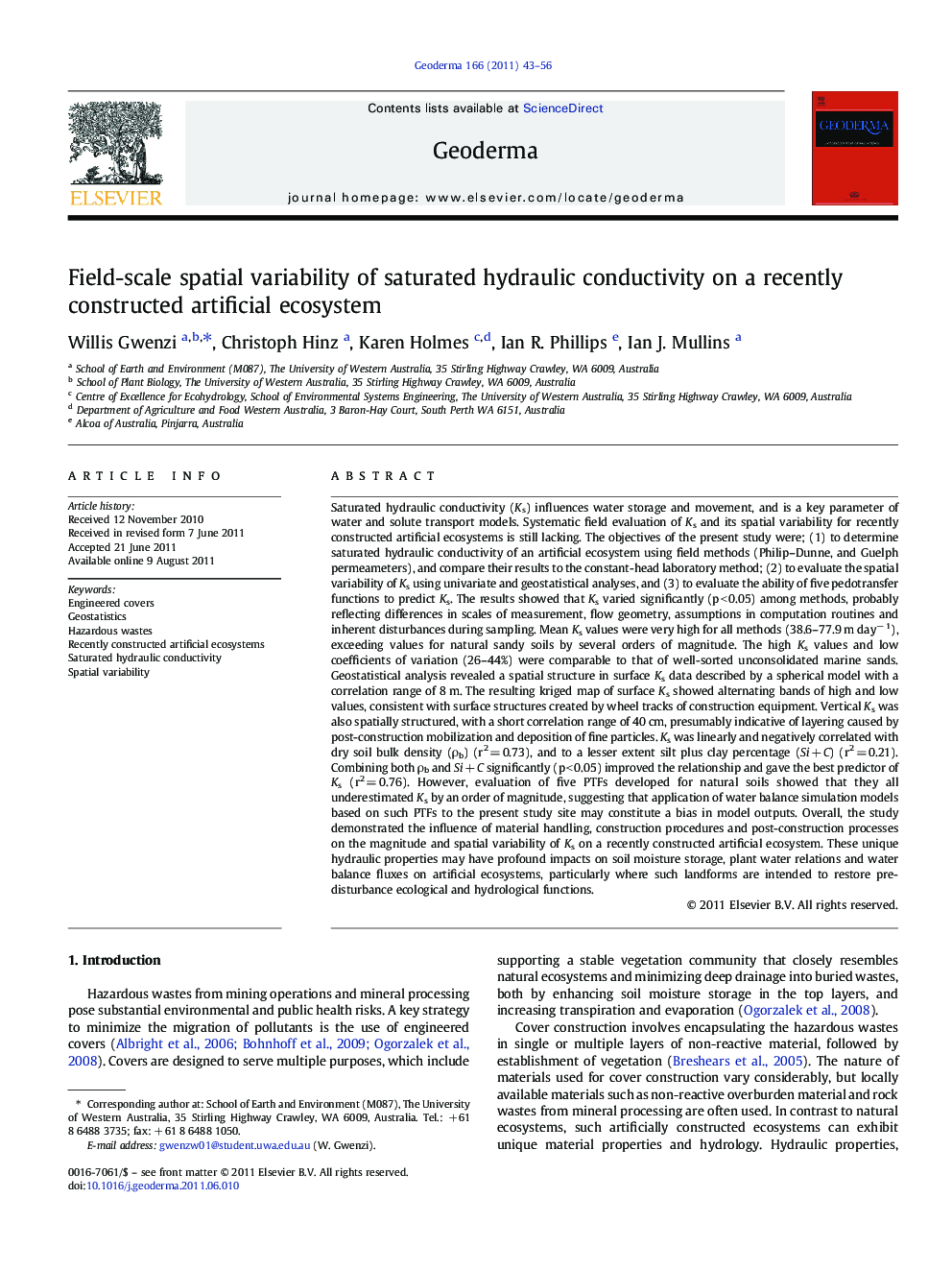| Article ID | Journal | Published Year | Pages | File Type |
|---|---|---|---|---|
| 4574054 | Geoderma | 2011 | 14 Pages |
Saturated hydraulic conductivity (Ks) influences water storage and movement, and is a key parameter of water and solute transport models. Systematic field evaluation of Ks and its spatial variability for recently constructed artificial ecosystems is still lacking. The objectives of the present study were; (1) to determine saturated hydraulic conductivity of an artificial ecosystem using field methods (Philip–Dunne, and Guelph permeameters), and compare their results to the constant-head laboratory method; (2) to evaluate the spatial variability of Ks using univariate and geostatistical analyses, and (3) to evaluate the ability of five pedotransfer functions to predict Ks. The results showed that Ks varied significantly (p < 0.05) among methods, probably reflecting differences in scales of measurement, flow geometry, assumptions in computation routines and inherent disturbances during sampling. Mean Ks values were very high for all methods (38.6–77.9 m day− 1), exceeding values for natural sandy soils by several orders of magnitude. The high Ks values and low coefficients of variation (26–44%) were comparable to that of well-sorted unconsolidated marine sands. Geostatistical analysis revealed a spatial structure in surface Ks data described by a spherical model with a correlation range of 8 m. The resulting kriged map of surface Ks showed alternating bands of high and low values, consistent with surface structures created by wheel tracks of construction equipment. Vertical Ks was also spatially structured, with a short correlation range of 40 cm, presumably indicative of layering caused by post-construction mobilization and deposition of fine particles. Ks was linearly and negatively correlated with dry soil bulk density (ρb) (r2 = 0.73), and to a lesser extent silt plus clay percentage (Si + C) (r2 = 0.21). Combining both ρb and Si + C significantly (p < 0.05) improved the relationship and gave the best predictor of Ks (r2 = 0.76). However, evaluation of five PTFs developed for natural soils showed that they all underestimated Ks by an order of magnitude, suggesting that application of water balance simulation models based on such PTFs to the present study site may constitute a bias in model outputs. Overall, the study demonstrated the influence of material handling, construction procedures and post-construction processes on the magnitude and spatial variability of Ks on a recently constructed artificial ecosystem. These unique hydraulic properties may have profound impacts on soil moisture storage, plant water relations and water balance fluxes on artificial ecosystems, particularly where such landforms are intended to restore pre-disturbance ecological and hydrological functions.
► We study the spatial variation of hydraulic properties on an artificial ecosystem. ► Saturated hydraulic conductivity Ks exceeded typical values for natural soils. ► Five pedotransfer functions underestimated measured Ks. ► Variability of Ks was very low, reflecting the well-sorted sandy texture. ► Surface Ks showed a spatial structure associated with construction procedures, while the depth variation of Ks showed vertical layering caused by particle filtration and bulk density changes.
